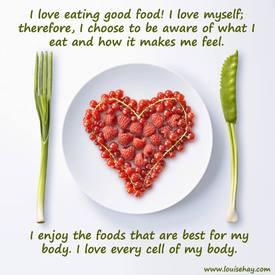How margarine is made.
Options
Replies
-
That biased flow chart in no way proves your claim.Eat whole unprocessed foods. This other stuff is not healthy or better for you.
Do you have any evidence to back your claims up?0 -
http://images.quickblogcast.com/2/0/6/7/0/314651-307602/475114396506840395866586960268o.jpg?a=82
Eat whole unprocessed foods. This other stuff is not healthy or better for you.
This is such breaking news!!0 -
http://images.quickblogcast.com/2/0/6/7/0/314651-307602/475114396506840395866586960268o.jpg?a=82
Eat whole unprocessed foods. This other stuff is not healthy or better for you.
Butter is processed, so that is out too
If stirring fresh whole fat cream is considered processing, then we're all in a great heap of trouble. To get butter, you take heavy cream and stir it til it thickens. This is butter. You can make butter in your own kitchen using ONLY cream. Nothing needs to be added - no chemicals, no stripping... butter is not processed. Read the ingredients sometime. You'll find one, maybe two, ingredients (if it's salted). Cultured cream and salt... that's it. Stirred and done. No processing needed.
"processing" doesn't mean adding something. Every dairy product that is not in the form from which it squirtted from an udder is processed to some degree. Even if it's just churned.0 -
If butter had a compositional label on it, these would be the ingredients:
Butter:
Butterfat composed of butyric fatty acid, caproic fatty acid, caprylic fatty acid, capric fatty acid, lauric fatty acid, myristic fatty acid, palmitic fatty acid, stearic fatty acid, arachidic fatty acid, decenoic fatty acid, tetradecenoic fatty acid, hexadecenoic fatty acid
Octadecenoic fatty acid, and Octadecadienoic fatty acid. Water, Beta carotene (from the food dairy cattle eat, and can be added for color), Vitamin D, Diacetyl, Acetylmethylcarbinol, Sodium bicarbonate. Mixed Citrates, sodium chloride (salt if added).0 -
That biased flow chart in no way proves your claim.Eat whole unprocessed foods. This other stuff is not healthy or better for you.
Do you have any evidence to back your claims up?
Ever heard of hexane? Not all oils are cold pressed...many are extracted by using hexane.
http://www.cornucopia.org/2010/11/dirty-little-secret-in-the-natural-foods-industry-toxic-chemical-use/0 -
If butter had a compositional label on it, these would be the ingredients:
Butter:
Butterfat composed of butyric fatty acid, caproic fatty acid, caprylic fatty acid, capric fatty acid, lauric fatty acid, myristic fatty acid, palmitic fatty acid, stearic fatty acid, arachidic fatty acid, decenoic fatty acid, tetradecenoic fatty acid, hexadecenoic fatty acid
Octadecenoic fatty acid, and Octadecadienoic fatty acid. Water, Beta carotene (from the food dairy cattle eat, and can be added for color), Vitamin D, Diacetyl, Acetylmethylcarbinol, Sodium bicarbonate. Mixed Citrates, sodium chloride (salt if added).
True, but some butters are from grass fed cows and don't include additives.0 -
"True, but some butters are from grass fed cows and don't include additives..."
There is not a single "additive" beyond salt and/or beta carotene listed. Grass fed usually means the dairy cattle have a higher concentration of beta carotene present in their milk and fat. NOT additives, fatty acid distribution changes based on seasonal variations and diet, but fatty acids of varying carbon chain length compose ALL fats.0 -
"True, but some butters are from grass fed cows and don't include additives..."
There is not a single "additive" beyond salt and/or beta carotene listed. Grass fed usually means the dairy cattle have a higher concentration of beta carotene present in their milk and fat. NOT additives, fatty acid distribution changes based on seasonal variations and diet, but fatty acids of varying carbon chain length compose ALL fats.
I was referred to the beta carotene from the feed (feed additives). I am aware that the fatty acid distribution changes on seasonal variations and diet. That is why some seek out butter from cows grazing on pastures during peak season.0 -
I had both butter and margarine out on the counter. Stripes (our cat) would lick the butter and leave little tongue marks on it, but NEVER the margarine. We quit eating margarine.. If the cat won't eat it, is it good for us? Besides, same number of calories either way, why not eat what tastes better.
who says your cat chooses the healthy option? lol
My cat licks his own bum but doesn't steal fruit off the counter. Guess I will quit eating fruit!0 -
That biased flow chart in no way proves your claim.Eat whole unprocessed foods. This other stuff is not healthy or better for you.
Do you have any evidence to back your claims up?
Ever heard of hexane? Not all oils are cold pressed...many are extracted by using hexane.
http://www.cornucopia.org/2010/11/dirty-little-secret-in-the-natural-foods-industry-toxic-chemical-use/
So what's wrong with using hexane during processing?0 -
Traditional butter is processed using stuff with the following chemical makeup, which certainly isn't considered safe for human consumption! 0
0 -
Traditional butter is processed using stuff with the following chemical makeup, which certainly isn't considered safe for human consumption!
Traditional butter is churned...0 -
I know - the above is used for this processing, as I said.Traditional butter is churned...0 -
You said traditional butter is processed....
but anyway, again, reasons to avoid the processed stuff!0 -
(Hint -
That's the chemical make up of wood.
It seems a lot scarier when you call it a 'chemical not considered safe for human consumption'.
And churning certainly is the method of processing.
Which is why I try to look in to such things that I consume a little more, to fully understand the real risks, rather than being scared by big words
).0 -
Good one
 0
0 -
Traditional butter is processed using stuff with the following chemical makeup, which certainly isn't considered safe for human consumption!
If I am not mistaken, the diagram above is the polymerization of monolignols to form lignin in grass.
Not totally certain we need to go back that far in the process!.....
Thanks for making me search and look it up. I love topics like this!
Lignin is a cross-linked racemic macromolecule with molecular masses in excess of 10,000 u. It is relatively hydrophobic and aromatic in nature. The degree of polymerisation in nature is difficult to measure, since it is fragmented during extraction and the molecule consists of various types of substructures that appear to repeat in a haphazard manner. Different types of lignin have been described depending on the means of isolation.[15]
There are three monolignol monomers, methoxylated to various degrees: p-coumaryl alcohol, coniferyl alcohol, and sinapyl alcohol[16] (Figure 3). These lignols are incorporated into lignin in the form of the phenylpropanoids p-hydroxyphenyl (H), guaiacyl (G), and syringyl (S), respectively.[4] Gymnosperms have a lignin that consists almost entirely of G with small quantities of H. That of dicotyledonous angiosperms is more often than not a mixture of G and S (with very little H), and monocotyledonous lignin is a mixture of all three.[4] Many grasses have mostly G, while some palms have mainly S.[citation needed] All lignins contain small amounts of incomplete or modified monolignols, and other monomers are prominent in non-woody plants.[17]0 -
Tagline from the picture (stolen from wikipedia):
Chemical structure of lignin, which comprises approximately 30% of wood and is responsible for many of its properties.
Thus 'traditional' butter, as it'd have been contact with wood.
Oh and you've done a good job of making it much scarier, ta! 0
0 -
Fixed that for you...
Thanks for that Rob Have copied how you worked the link so I can use that sequence again.
Have copied how you worked the link so I can use that sequence again.
(Not that anyone seems to have noticed) :laugh:
I love butter!!0
Categories
- All Categories
- 1.4M Health, Wellness and Goals
- 392K Introduce Yourself
- 43.6K Getting Started
- 259.8K Health and Weight Loss
- 175.7K Food and Nutrition
- 47.4K Recipes
- 232.3K Fitness and Exercise
- 401 Sleep, Mindfulness and Overall Wellness
- 6.4K Goal: Maintaining Weight
- 8.5K Goal: Gaining Weight and Body Building
- 152.8K Motivation and Support
- 7.9K Challenges
- 1.3K Debate Club
- 96.3K Chit-Chat
- 2.5K Fun and Games
- 3.4K MyFitnessPal Information
- 23 News and Announcements
- 996 Feature Suggestions and Ideas
- 2.4K MyFitnessPal Tech Support Questions








